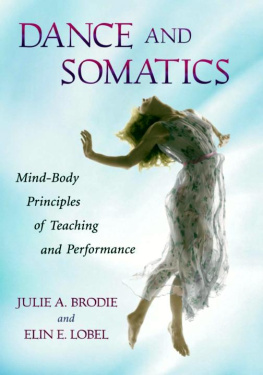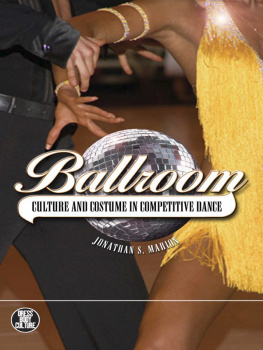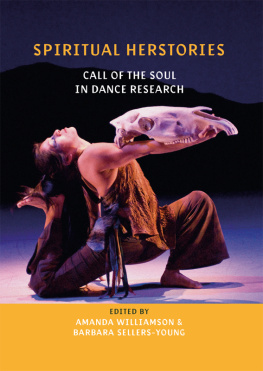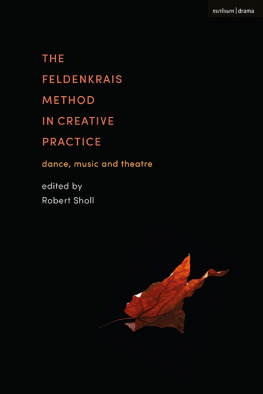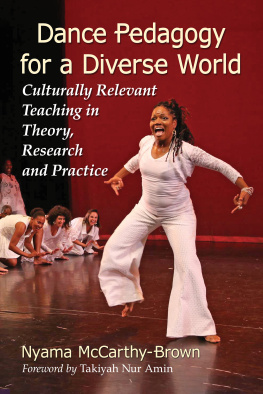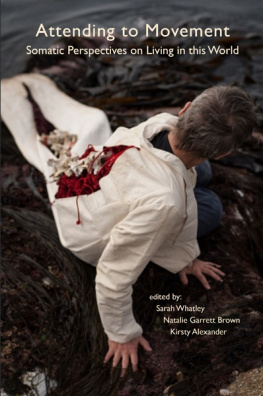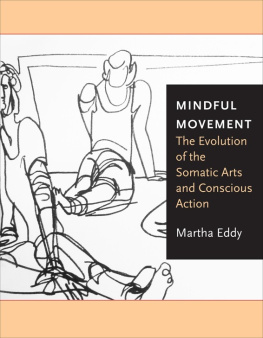Mind Body Principles of Teaching and Performance
JULIE A. BRODIE and ELIN E. LOBEL





Adriana, Brodie, Evi, and Juleon
And our parents:
Bruce and Colleen Brodie, and Barton and Sharon Clark
We would like to thank the following people and institutions for their assistance and support: Alexander Lobel, Michael Hufnagel, Kenyon College Department of Dance, Drama and Film, Towson University, Jean Blacker and the GLCA New Directions Initiative, and James Costello.
*Portions of this Preface previously appeared in the Journal of Dance Education (Lobel and Brodie 2006a) and are reprinted by permission of the authors and the publisher.
No real intellectual, emotional, or artistic growth can take place save as it is built upon a foundation of innate capacities and impulses. "- H' Doubler 1957, 58
This book presents ideas about how dance educators can incorporate information found in somatic practices into their teaching of dance technique and why this is important for dancers today. It also relates somatic approaches for teaching technique to scientific principles supporting and explaining these pedagogical choices. Training in somatic techniques is an effective means of improving dance students' efficiency and ease of movement. However, dance educators do not always have the resources to implement separate somatics courses within their curriculums or to incorporate this body of knowledge into their technique classes. Others may already be incorporating somatic work into their classes by means of repeating their own training experiences, but may wish to do so from a more developed base of knowledge.
While we recognize that it has been a growing movement over the last several decades to include somatic work in the dance technique class or for dancers to study somatic techniques outside of class to enhance their skills, we are interested in the underlying concepts that make this work appealing and helpful to dancers. With this in mind, this text introduces fundamental principles that are central to many somatic practices and provides possible models for integrating these ideas into the dance technique class. This text is intended to be helpful for teachers of any dance style and level, not just higher education modern dance, as these Somatic Principles can be applied to all forms of movement and are important to recognize at all levels of mastery. Hopefully teachers and students will explore the material in this text together, but dancers wanting to improve their performance can certainly also utilize these ideas on their own.
The path to this book began years ago, when we started dancing together as children studying the Royal Academy of Dance ballet technique. We both pursued careers as modern dancers before finding our way into academe and have continued to explore alternative training methods since. Lobel is a professor of kinesiology, as well as a Certified Laban Movement Analyst/Bartenieff Fundamentals practitioner and a Certified Feldenkrais practitioner. She teaches motor development, learning and control, as well as dance. Brodie is a dance professor with research specialties in kinesiology and Labanotation. She is currently enrolled in the Laban Movement Analysis/Bartenieff Fundamentals Certification Program, holds a black belt in karate, and is still dancing and choreographing. She attributes much of her long career as a mover to her training in various somatic techniques, including the Alexander Technique, Bartenieff Fundamentals, and yoga. We bring to this book our positive experiences with dance training and what we have learned from our less positive encounters, as well as what we have gleaned from our other explorations as movers and teachers.
Eight years ago, we were discussing our experiences with somatic learning and ways we have addressed its integration in our own classes. We found that what stood out were the commonalities between the various somatic practices that we have explored - the "ah-hah!" moments of realizing that inhibition and direction in Alexander Technique are similar to the non-doing and mental imagery used in Ideokinesis and Feldenkrais. Or that the Bartenieff Fundamentals' arm circles or knee drops are done in many somatic techniques with slight variations. It was this kind of thinking that originally inspired our article "Integrating Fundamental Principles Underlying Somatic Practices into the Dance Technique Class" (Brodie and Lobel 2004). Because of the clarity of this approach, the journal of Dance Education JODE) asked us to guest-edit a special issue devoted to the practical application of somatic principles in the classroom (Lobel and Brodie 2006b). We began to realize that the interest in this topic warranted further exploration and development, so we continued to flesh out our initial ideas through workshops, writing, and any other means of long-distance collaboration.
One challenge we have encountered has been finding ways of making the body of somatic knowledge more accessible to dance educators without minimizing the value of certification in specialized areas. We think we can best honor the depth of each field and the certification process by addressing the fundamental principles of somatic techniques and movement in general. Hopefully, focusing attention on what is universal can create a bridge between certified practitioners and potentially uncertified dance educators to pass somatic ideas on to students. It also may help students lucky enough to have specific somatic training with transferring their new experiences to dance technique and performance.
We have found that bringing awareness to the interdisciplinary principles of breath, sensing, connectivity, and initiation can assist dance students at all levels and with diverse learning styles in fulfilling their movement potential. Focusing attention on these processes can increase sensitivity, awareness, and responsiveness while moving. This state of consciousness can, in turn, improve dancers' alignment and efficiency in addition to enhancing their class-taking and performance skills (Feldenkrais 1972; Fitt 1996, 304; Lessinger 1996).
Throughout the book, we strive to demystify somatic thinking by explaining what is happening in terms of current scientific research when possible. Because somatic work is, by definition, based in the body and is about each individual's unique experience, it can be difficult to write about and explain without sounding vague or cultish. The phenomena seen and experienced can frequently be described in physiological terms, however, and we feel this is important to recognize, both to validate the skills and intuition of somatic practitioners and to help us in using these ideas to educate dancers. This recognition refers not only to the Somatic Principles we identify, but also to pedagogical approaches embraced by somatic practitioners that we can employ in the dance classroom. In addition, we want to reinforce the importance of students having a basic working knowledge of anatomy, physiology, and kinesiology in order to achieve a greater depth of understanding of the moving body. As such, we include this information as it arises in the context of each support principle. As Thomas Hanna said, "The somatic viewpoint seeks to understand life, first of all, by taking notice of the physical forces that have shaped the body of life.... Far from demeaning the phenomenon of life and robbing it of its significance, such a viewpoint leads to the discovery that life, in its manifestation as the soma, takes advantage of these universal laws and uses them for its advancement" (Hanna 1993, 38).

